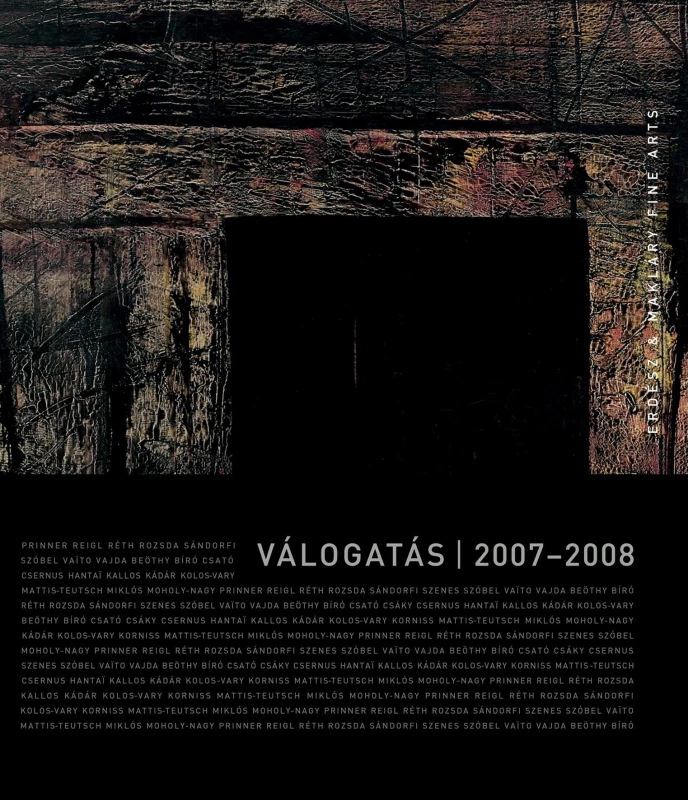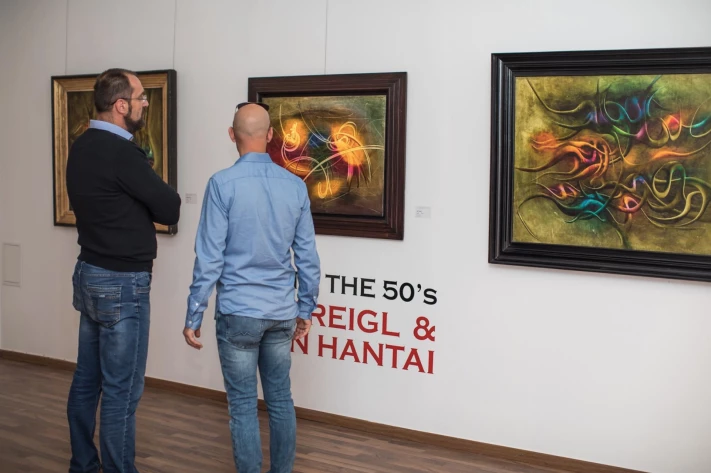The Art of the Fugue, c.1976
mixed media on canvas, 90 x 125 cm
Art of the fugue, 1980–1982
In the painting ensemble entitled The Art of the Fugue, inspired by Bach’s music, Reigl employs a new technical method of painting the canvas on both sides. She applies glycerophtalic paint on one side, which seeps through to the other side, and which she then covers with acrylic paint. Since glycerophtalic paint repels acrylic, the acrylic peels off the motifs that have been created by the glycerophtalic paint that had seeped through, and it can only cling to the untreated parts of the canvas. In this way, chemically, physically and visually, the ensemble of the leading voice and the accompaniment comes into being.
“It was thus, while I listened to Bach, that this new series was born, which I entitled L’art de la fugue [The art of the fugue]... Undulating writing in thick, glycerophtalic paint (a sort of Duco) on the front of the canvas that thinned out and became corpuscular as it passed through to the back. Oddly enough, this very thick paint was resistant to the acrylic that I painted over the entire canvas, set up this time horizontally on a horizontal frame. In this second phase, the acrylic was repelled by the thick paint, as water runs off a duck’s back. It is a struggle in construction and destruction that gives the incredible result, when it reaches its final phase, of a painting visible from both the front and back...” (Judit Reigl)
A fúga művészete, 1980−1982
A fúga művészete című, Bach zenéje ihlette festmény-együttesben Reigl egy új technikai megoldást alkalmaz, a vászon mindkét oldalát megfesti. Egyik oldalára glicerin és ftálsav alapú festéket applikál, ami átszivárog a vászon túloldalára, amelyet viszont akrilfestékkel von be. Mivel a glicerin és ftálsav alapú festék visszataszítja az akrilt, az átszivárgott festék által létrejött motívumról lepereg az akril festék, ami a szűz vászonrészeken tud csak megkapaszkodni. A vásznon így kémiailag, fizikailag és vizuálisan is létrejön a szólam és a kíséret együttese.
„Így született meg Bach hallgatása közben ez az új sorozat, melynek a L’art de la fugue [A fúga művészete] címet adtam... A vászonra sűrű ipari zománcfestékkel (egyfajta dukkó-zománc) felvitt hullámzó írás a vászon túloldalára átszivárogva nyomokat hagyott. Ez a sűrű festék furcsa módon taszította magától azt az akrilfestéket, amellyel az egész vásznat befestettem, ez alkalommal vízszin- tes kereten dolgozva. A festés második szakaszában a sűrű zománc levetette magáról az akrilfes- téket, mint ahogy a víz lepereg a kacsák tolláról. Az építés és a rombolás harca ez, amely végül egy hihetetlen eredményhez vezetett: egy olyan festményhez, amely a vászon színén és a hátoldalán is látható...” (Reigl Judit)


















